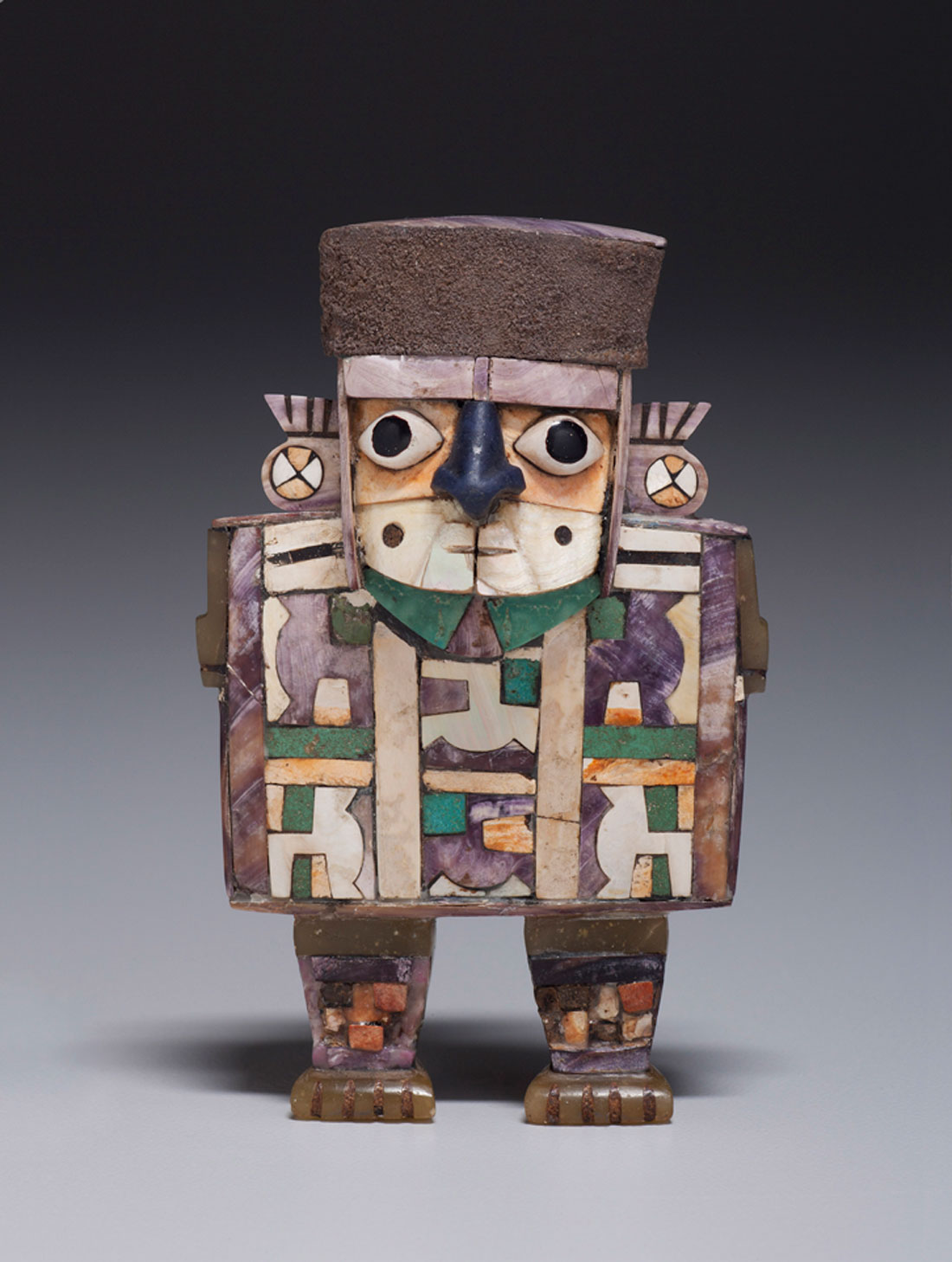In 2002 the Kimbell Art Museum acquired a Wari figurine of a standing dignitary that has become a popular item in the permanent collection. This week you can learn more about the time-enshrouded culture that produced that beguiling artifact when the museum opens Wari: Lords of the Ancient Andes.
One of the first sophisticated civilizations in the western hemisphere, the Wari flourished between 500 and 1000 A.D. on the coast of Peru, centuries before the Incan civilization took root. Since the Wari never developed a written language, their political structures are unknown to us, but evidence does show that they were an expansionist state, operating administrative centers along the coast and bringing farming technology and a network of roads (which the Incas later used) to the countryside.
The Wari appear to have used their art, rather than a written language, for communication and recording major events. In contrast with Incan art, Wari art often uses bright colors, and the figures of people and animals are more personable. We shouldn’t read too much into that last bit — the Wari did practice human sacrifice. Yet this show is still a charming exhibit as well as a chance to learn about this civilization that only recently came to light. It’s on display at the Kimbell through the summer.
[box_info]Wari: Lords of the Ancient Andes runs Jun 16-Sep 8 at Kimbell Art Museum, 3333 Camp Bowie Blvd, FW. Tickets are $12-16. Call 817-332-8451.[/box_info]












